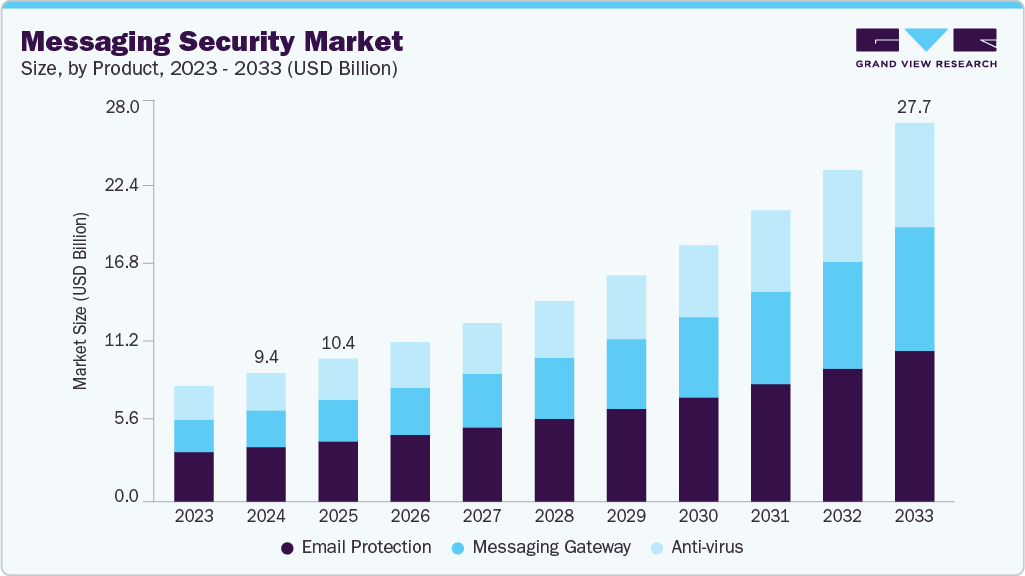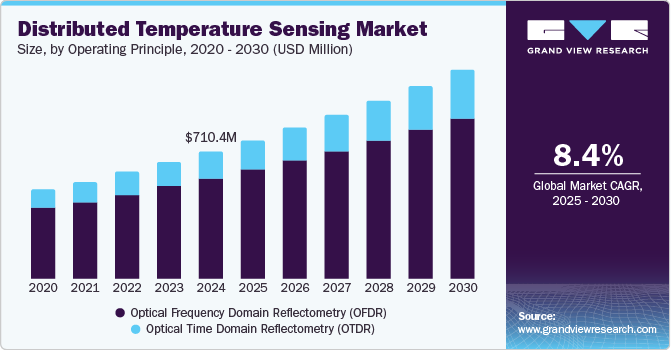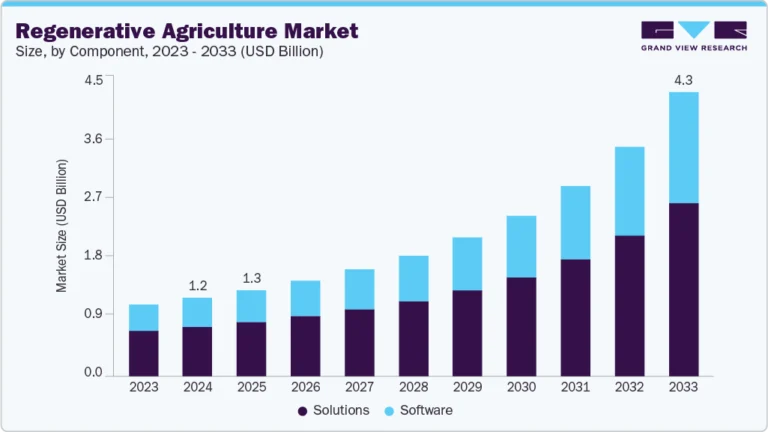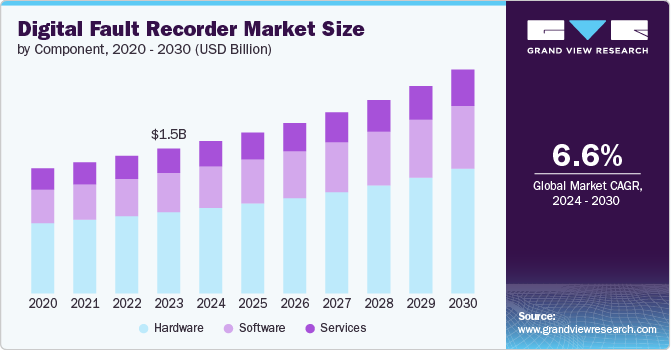Messaging Security Market Size, Share, & Trends Analysis growing at a CAGR of 13.0% from 2025 to 2033

The global messaging security market size was estimated at USD 9.38 billion in 2024 and is projected to reach USD 27.67 billion by 2033, growing at a CAGR of 13.0% from 2025 to 2033. The market is witnessing steady growth, driven by the exponential rise in cyber threats targeting enterprise communication channels, especially email and instant messaging platforms.
Key Market Trends & Insights
- North America held 36.2% revenue share of the global messaging security market in 2024.
- In the U.S., the global shift toward remote and hybrid work models are key factors driving the growth of messaging security market.
- By product, email protection segment held the largest revenue share of 42.4% in 2024.
- By deployment, cloud segment held the largest revenue share in 2024.
- By end use, corporate segment held the largest revenue share in 2024.
Market Size & Forecast
- 2024 Market Size: USD 9.38 Billion
- 2033 Projected Market Size: USD 27.67 Billion
- CAGR (2025-2033): 13.0%
- North America: Largest market in 2024
- Asia Pacific: Fastest growing market
Request a free sample copy or view report summary: https://www.grandviewresearch.com/industry-analysis/messaging-security-market/request/rs1
The rise in regulatory pressure and data protection laws globally is playing a significant role in fueling the messaging security market. Regulations such as GDPR in Europe, HIPAA in the U.S., and various data localization mandates across Asia-Pacific have compelled organizations to ensure that sensitive data shared over email or messaging platforms is adequately protected. This includes implementing encryption, data loss prevention (DLP), and audit trails to demonstrate compliance during regulatory audits or investigations. Messaging security products that offer built-in compliance support and automated policy enforcement are being prioritized by industries such as healthcare, finance, and legal services, where data confidentiality is not just a preference but a legal requirement. As new regional and sector-specific regulations continue to emerge, organizations are investing in security solutions that can adapt to a dynamic compliance landscape.
Furthermore, the growing reliance on automation and artificial intelligence in messaging security products is helping enterprises respond faster and more effectively to emerging threats. Security vendors are integrating AI-driven analytics and machine learning algorithms into their solutions to detect anomalies, flag suspicious content, and adapt to new threat patterns without manual intervention. These intelligent systems can analyze massive volumes of message data in real-time and help security teams prioritize the most critical threats. The promise of faster threat detection and reduced response times through automation is particularly appealing in an era where cyberattacks can unfold in minutes, and the cost of delayed action is exceptionally high. As AI capabilities continue to mature, their role in enhancing the efficacy of messaging security platforms is likely to become more pronounced.
In addition to external threats, the increasing focus on insider risk management is contributing to market growth. Employees may inadvertently or maliciously share confidential information via messaging platforms, bypassing existing controls. Messaging security tools that incorporate content inspection, user behavior analytics, and contextual policy enforcement can help detect and prevent these incidents. Organizations are also using these tools to monitor sensitive data transmissions, block unauthorized file sharing, and ensure that communication policies are being followed across internal teams and external stakeholders. As insider threats become a more widely recognized risk factor, the ability of messaging security solutions to provide real-time oversight and control over internal communications is becoming a key differentiator.






